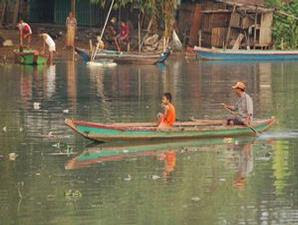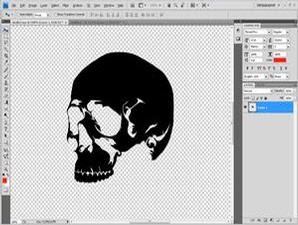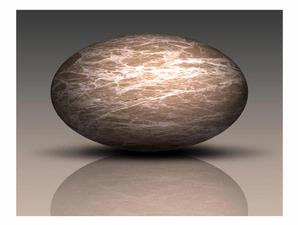

Many good things that affect the very least a photo: from the point of view, the object, to the effect. But the most striking is the quality of color and lighting. If by any chance the photos you take experienced shortfalls in this case, do not have to be disappointed. There are easy ways to outsmart. Take advantage of the software only if digital.
Is Adobe Photoshop - photo retouching software that is popular with graphics and photography actors - who I select. Although the software is classified as a pro class, there are many compact facility that you can use to improve the image quickly and easily, even for ordinary users though. Adobe Photoshop CS4, final version, provides many facilities to meet those needs. Live clack-click of the mouse for a while, your photos will look more beautiful.
Want try? Follow these steps.
- The first stage, consider first picture if you want, where faults. Photos appear dim, the color is opaque, much less detail the object? Let's fix it.
- The first and easiest is to use the auto adjustment. How, click [Image]> [Auto Tones]. Take advantage also [Auto Contrast] and [Auto Color].
- If the result is less satisfactory, let one by one we Oprek each component image. First, the lighting. Click [Image]> [Adjustment]> [Levels]. Wait until the Levels dialog box appears.
- If the images look dark, drag the slider bar to the left white so images look bright. Do not forget to move the slider a little gray (midtones) to the right to maintain the image detail. If the images are too bright, move the slide bar to the right black. If so, click [OK].
- Another way to maintain the detail and lighting is set by adjusting the contrast. Click [Image]> [Adjustment]> [Brightness / Contrast ...]. In the dialog box that appears, move the slide bar "Brightness" to the right to increase the level of the photo caption, and then followed by "Contrast" to prevent the image detail is lost. If so, click [OK].
- Improve the color and lighting can be done simultaneously with Curve facilities. Click [Image]> [Adjustment]> [Curve ...]. In Curve dialog box, available from a number of facilities to improve the image instantly. One is the [Auto] that can be used to improve the quality of lighting automatically.
- In this box is also available rapid setting (preset) for a number of output results. For example, if you want the image has the contrast level is rather high, simply click the drop-down menu "Preset", then select [Increase Contrast].
- To apply the settings manually set the color curves in the middle of the box. Click one point on the curve line, then drag up or down. For example, in the position [RGB], if the curve is clicked at the bottom left and then pulled down, then the picture will turn dark with high contrast levels. To raise the level of brightness, click on the top right point and drag upward.
- You can do this step for each color channel (for RGB, the image consists of channel Red, Green, and Blue). If you want to raise the red element in the photo, click the channel [Red], then click-drag the curve to achieve the desired color. Please imaginination with color photos here. Click [OK] to close the box.
- If the color variation in your images look a lot less due to the quality of the camera sensor, color by clicking ragamkan [Image]> [Adjustment]> [Hue & Saturation ...]. In the box that appears, move the "Saturation" to the right to increase the variety and intensity of colors in the image.
- If a particular color that you want to raise its intensity, click the menu marked "Master", and select the desired color. Drag the slide bar to the right "Saturation" to the colors you choose are increasingly "hard". When done, click [OK].
- The latter, also to regulate the lighting, use [Image]> [Adjustment]> [Exposure ...]. Manage the three existing slide bar to adjust the light-dark photo. Click [OK]. All of the above tools is an effective tool to enhance your photos.
Labels: Information Technology , Internet News , Photoshop , Software Guide

 The skull was burning like effects in science fiction movies is the theme this time digital imaging. Although a bit smelly horror, your results are guaranteed is very cool. How to make it not too difficult.
The skull was burning like effects in science fiction movies is the theme this time digital imaging. Although a bit smelly horror, your results are guaranteed is very cool. How to make it not too difficult.

 Adobe Photoshop can be used not only to manipulate photos or images. In CS4 Extended editions, this application also provides facility to create three-dimensional images (3D). Although simple, the result was quite ciamik and practical use.
Adobe Photoshop can be used not only to manipulate photos or images. In CS4 Extended editions, this application also provides facility to create three-dimensional images (3D). Although simple, the result was quite ciamik and practical use. With a beautiful design and complete facilities, Lenovo IdeaCentre A600 is an ideal representation of a PC AiO. Not long ago, the vendor re-release of his newest family IdeaCentre labeled C300. Can be traced from its name if this product is set as a downgraded version of the A600. However, the design aspect remains a mainstay of Lenovo. This time they gave interface attraction with classical motive frame.
With a beautiful design and complete facilities, Lenovo IdeaCentre A600 is an ideal representation of a PC AiO. Not long ago, the vendor re-release of his newest family IdeaCentre labeled C300. Can be traced from its name if this product is set as a downgraded version of the A600. However, the design aspect remains a mainstay of Lenovo. This time they gave interface attraction with classical motive frame.